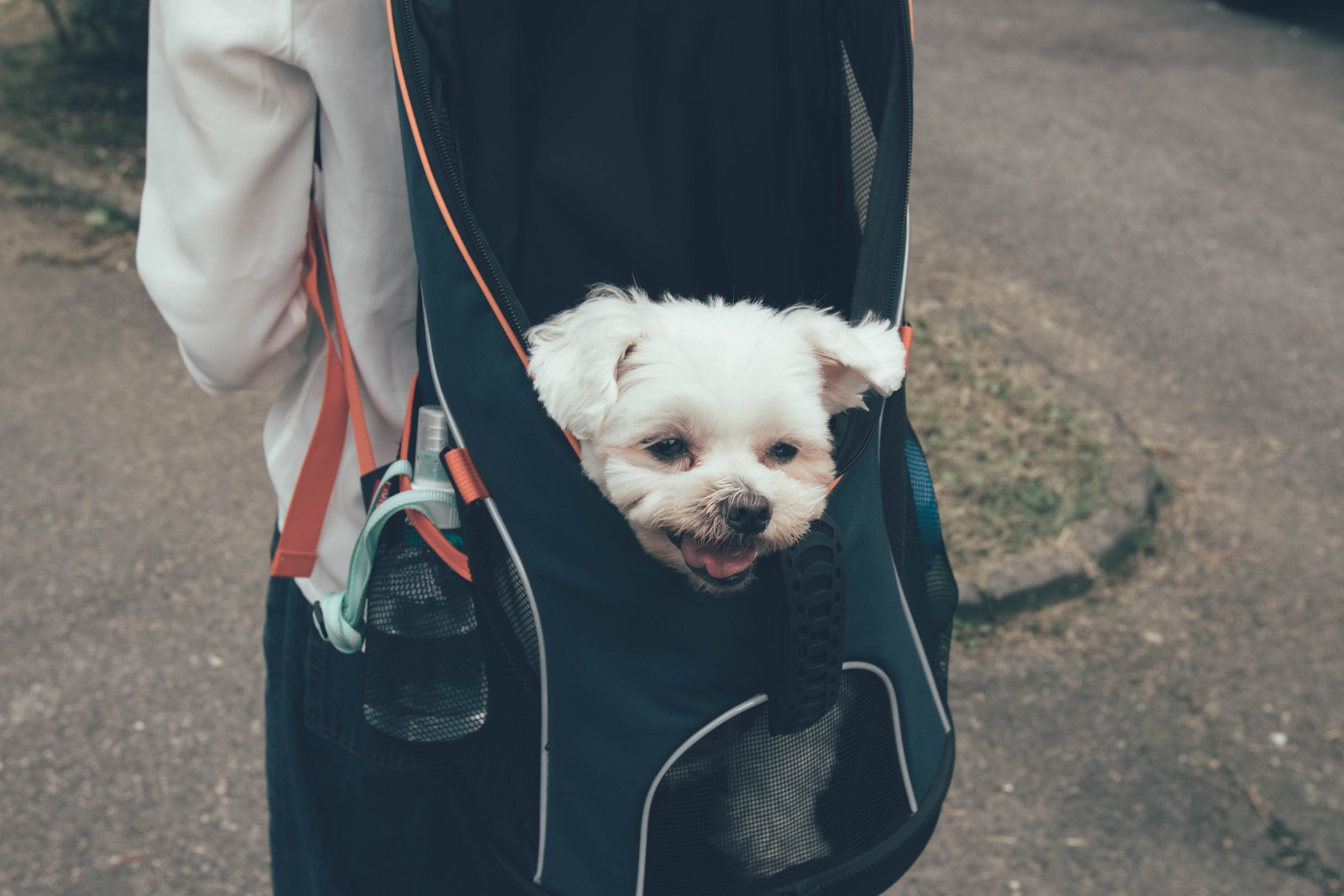Don’t Ditch the Bag: Lessons in Leash Walking
It’s normal to find yourself counting down the days until your puppy receives their last round of shots and can walk freely on the sidewalk. If that’s you, you might also be harboring a serious grudge against the carrying bag you’ve used to tote your puppy around town for the past two months. Well, we’re here to suggest you think twice about ditching the bag. It turns out carrying bags might be the answer to building fantastic leash-walking skills in a puppy. Let us tell you how!
Why Use the Bag in the First Place?
Up until a puppy’s fourth round of shots, many veterinarians recommend keeping them off the ground to prevent sickness. This is tough news for puppy parents and canine behavior professionals as many of us know that when a puppy is first brought home they are in their “critical socialization period.”
During this time, typically between 8-16 weeks, puppies are learning about and making valuable associations with the world and all of the stimuli (people, animals, things) in it. If we keep puppies at home during the critical socialization period they often miss out on important socialization opportunities and can be prone to fear later on.
Our answer to this problem…bring the puppy out in a bag! This has served as a wonderful way to satisfy both trainers and veterinarians as the puppy gets their socialization opportunities from the safety of a clean carrying bag.
When it Comes Time to Ditch the Bag
Once your puppy is fully vaxxed and ready to explore the world you may be tempted to toss that carrying bag. We’re here to tell you to WAIT JUST A MINUTE. That carrying bag is your key to building a solid foundation for loose leash walking skills in your pup.
For many puppies, the first time they are walked on a leash is also the first time they experience walking on the sidewalk. We recommend that our puppy clients begin acclimating their puppies to the leash indoors but don’t worry if you didn’t get the memo!
For their first few days and weeks of leash walking the goal is to really let your puppy interact with and explore the outside world. This means that leash walks should be slow and directionless. Leash walks should not be focused on getting the puppy to walk around the block or go to the store with you. Your puppy has most likely spent the past month with you without ever touching the sidewalk. We need to give them adequate time to figure it all out before requiring that they move with intention.
What Does a Bag Have to Do with Leash Walking?
This is where the bag comes in. Now that your puppy has the ability to walk you may be tempted to run errands with them during your daily outings. But what happens when your puppy has more interest in chasing the leaves on the ground or gets tired after moving only 10 feet?
At this point you may already be running late, so you sigh exasperatedly and begin tugging on the leash to encourage the puppy to move. Maybe the puppy, who is still not quite used to their harness and leash setup, gets frustrated with this pulling and flops down onto the ground or begins biting at the leash in response. So you, as a harried puppy guardian, think quickly and pull out a treat. You hold it in front of your puppy’s nose to encourage them to move and guess what, IT WORKS! You make it to the store only 5 minutes late.
What’s Wrong with this Picture
We can’t really expect a puppy who has never been on the street before to know that they should be walking alongside their parent and matching the pace. We set our puppies and ourselves up for failure when we take them on outings with time limits and expect them to get from point A to point B in the allotted time.
Using a treat to lure your puppy to walk teaches them that when they sit on the sidewalk you will pull out a treat and hold it in front of them until they start walking again. Thus they will keep stopping to make that treat appear! If you don’t use a treat and instead use leash pressure to get them to move, they could become averse to the pressure altogether and you will find that as they walk if they feel even the slightest pressure they will stop completely. They might also begin avoiding the leash even before you’ve clipped it to their harness. What a mess to get yourself in!
In Defense of Carrying Bags
The easiest way to avoid this mess is to keep the carrying bag, for the larger puppies out there maybe you use a cart or stroller. When you need to get your puppy to the vet or a friend’s, rather than making them walk the whole way give them a chance to explore first. When their time is up, pop them in the bag and be on your way. This will save you so much time and frustration in the long run.
You will not need to use the bag forever. While your puppy is gaining confidence on the streets you can slowly begin to work on their leash-walking skills. It is much easier to build these if they aren’t sitting every 5 steps or pulling against the leash from the start.



